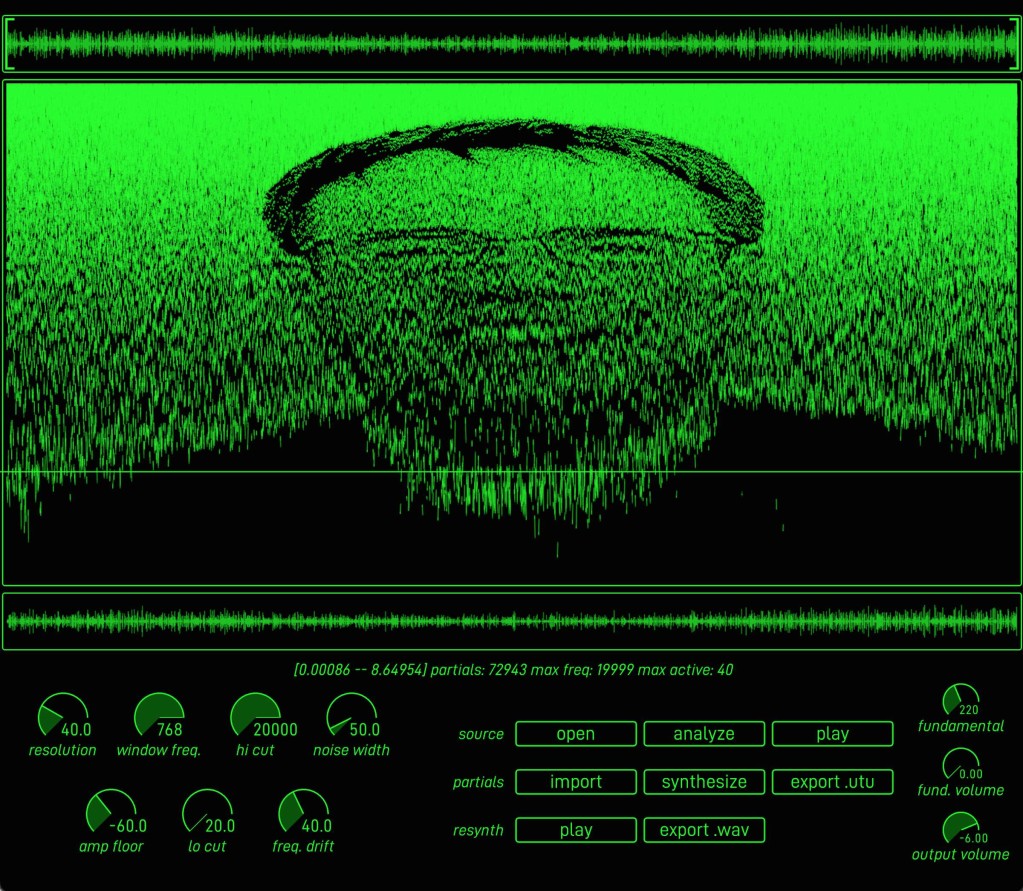Sumu is a true virtual instrument from Madrona Labs, with some unique approaches to demystifying and visualizing additive resynthesis and FM. David Abravanel takes us on a tour.
Every so often, it’s fun to remember that Madrona Labs’ incredible plugins are a “tail wagging the dog” story. Looking for a virtual instrument that would take full advantage of the expressive possibilities of his SoundPlane controller, Madrona founder Randy Jones initially designed Aalto, a West Coast-style semi-modular synth that has since become a modern classic for anyone looking for complex and evolving sounds. A few years later, Kaivo followed, this time tackling granular synthesis and physical modeling, along with vocoder-gone-wild Virta and flexible plate Aaltoverb.
Now, we have the early access (i.e. open beta with reduced price) for Sumu, a Madrona take on digital synthesis, with a focus on additive resynthesis and frequency modulation (FM). Feast your ears/eyes:
From the get-go, this is clearly another Madrona baby – a beautiful interface with all modules in one UI and a virtual patch bay in the center. Also, most of these modules are far from what you would see in your average plugin. There’s a lot more info in the Sumu manual, but a quick and dirty rundown of what’s going on in Sumu:
- The Input module, always nicely done in Madrona synths, has some upgrades. Sumu supports 1-16 voices of polyphony, unison, a large host of different scales, and has dedicated output ports for pitch, gate, aftertouch, x and y positions, and more. No MPE as of yet, but it’s already appeared in Aalto and Kaivo, and Madrona Labs assures us it will be available in version 1.0.
- Sound generation comes from an Oscillator module, providing 64 oscillator pairs per voice. Control-wise, the module borrows some from Aalto and features both amplitude modulation (AM) and FM modes.
- Central to control is the Partials module, which contains sounds resynthesized to 64 partials (each partial = 1 additive sine wave). Think of Partials as providing “maps” of the input sound based on partials, giving you control data based on the pitch, amplitude, and noisiness of each of the 64 partials. By feeding this data directly into the corresponding inputs in the Oscillator, you can get a resynthesis of the original sound, complete with lots of digital sheen.
- Envelopes provides a DADSR envelope – or rather, 64 of them (sensing a theme?) with some creative options for offsetting and separate outputs for the low and high envelopes.
- Pulses includes 64 (there we are again) nicely animated, uh…pulses. With loads controls for probability, weighting, quantization, and of course outputs for low and high in addition to all.
- Every Madrona Labs instrument has to include a gorgeous spatialization effect, and here we get the aptly-named Spaces. In “anechoic” mode, it’s a very detailed XYZ model for positioning output sounds with controls for “home” (initial/clustered) and “field” (how things move out) behaviors. The virtual chamber can also be used with small/medium/large room models for progressively more reverb, which suggests that we might see additional algorithms added down the line.
- Similar to Aalto, there’s a multimode Filter selectable for bypassed, lowpass, highpass, and bandpass modes, with controls for cutoff and resonance.
While it doesn’t affect the sound, there’s a nifty Scope module for visualizing any of the outputs across waves or dots.
Of course, just listing the modules is far from the full story. The routings are where you get elaborately evolving sounds, and there are some serious doozies possible with Sumu. Check out a couple videos from beta testers below:
As you can hear, Sumu excels in the kind of harmonically rich, bell-like tones and evolving sweeping sounds that you might expect from some of the most out-there additive and FM sounds. Working with Sumu provides a very different experience from other additive or FM synths, however – the Partials module, the handling of envelopes, the Pulses controls, these are all conducive to experimenting and achieving wild sound sculpting. Even if Sumu sounds or looks like it’d overwhelm you, I encourage you to give it a try: Madrona synths are always well laid out, the manual (as per usual) is a hilariously entertaining read, and there’s a lot you can do by just hooking things up randomly and seeing what happens. More often than not you’ll find your curiosity rewarded (though maybe just turn on the “clip” option while tweaking to keep your ears safe).

Run the Vutu down
Sumu isn’t all that’s new here. A companion piece of (free) software, Vutu, can take in any sound and export a resynthesized file that Sumu can import for use in the Partials module.
The author’s face resynthesis loaded in the Partial module in Sumu – note the, uh, resemblance?

Have we heard this before?
It’s safe to say that there isn’t anything currently on the market quite like Sumu, but the synthesis methods and the sounds it can create were heavily inspired by some of Madrona founder Randy Jones’ favorite pieces of music. He’s shared a few of them below:
Madrona Labs’ Sumu is currently in “early access”, available as an open beta. Prior to the 1.0 release, a license costs 129 USD, after which it will be 179 USD.
https://madronalabs.com/products/sumu